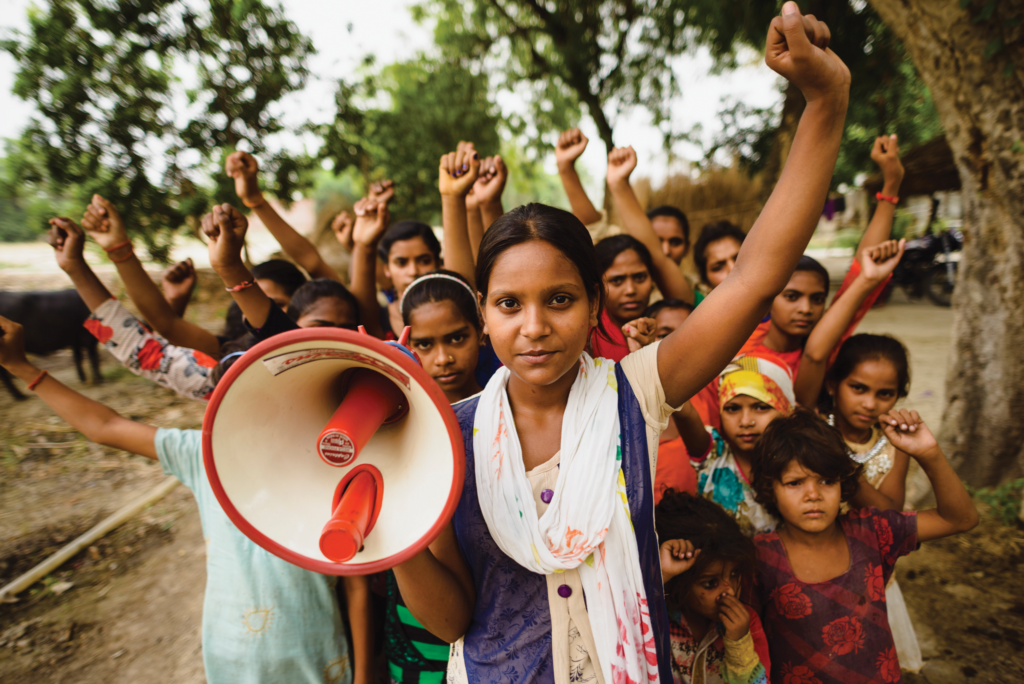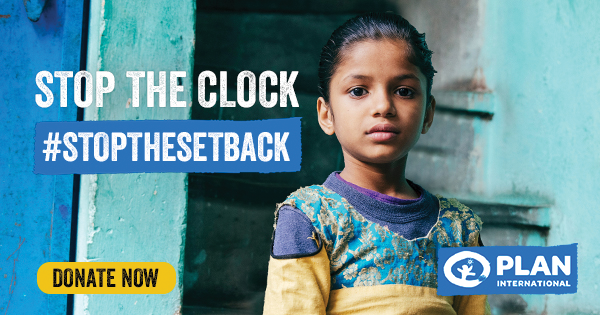As children, we’re told we can be anything, from astronauts to Hollywood movie stars. Unfortunately, for many kids (especially girls) around the world, their dream is basic rights and opportunities.
Plan International Canada works to remove barriers so children in underdeveloped countries can live out their potential. We chatted with Plan International Canada about their mission and what makes this organization unique.

Tell us about Plan International Canada’s mission.
Plan International Canada works for and with children, community members, and governments so that all children around the world can exercise their rights. We do this by focusing on eight core areas, with gender equality as a foundational objective.
Our work seeks to tackle the root causes of gender inequality and remove barriers that keep children, especially girls, from reaching their full potential.
Plan International Canada is a member of a global organization dedicated to advancing children’s rights and equality for girls. Plan International has been building powerful partnerships for children for over 80 years and is now active in more than 75 countries.

What inspired your founders to start Plan International Canada?
In 1937, British journalist John Langdon-Davies founded what was originally known as Foster Parents Plan for Children in Spain to help children whose lives were disrupted by the Spanish Civil War. By 1938, 300 Spanish children were sponsored by Plan International. The following year, Eleanor Roosevelt became a sponsor, continuing to support the organization for many years.
Plan International marked its 60th anniversary in 1990 by reaching an incredible milestone: supporting its one millionth sponsored child, a young girl from Mali. By 1999, the number of Plan-sponsored children grew to over 1.2 million children.
A decade later, Plan International began highlighting the unique challenges faced by girls in low-income countries, launching our Because I am a Girl initiative in Canada to promote gender equality in the countries where we work.
Plan International celebrated its 84th anniversary in 2021, marking our continued commitment to children’s rights around the world.

Together we can Stop The Setback by helping girls rewrite their futures for the better.
As we move into the fourth phase of our global fundraising campaign, we aim to raise awareness of the work Plan International does and drive donations to help us support the world’s most vulnerable girls and provide them with the support they need to fulfill their potential.
What were some of the challenges you encountered?
Plan International Canada has over 80 years of experience in international development and humanitarian response, and remains committed to children’s rights and equality for girls as the world navigates and responds to the COVID-19 pandemic.
The COVID-19 crisis has affected people across the globe and has become a challenge in the humanitarian world. Primary health impacts have been grave, and associated lockdowns and disruptions have led to additional (secondary) impacts.
The pandemic has caused unprecedented hardship for people around the globe, but for girls in crisis, it’s done more than just set them back. It’s unravelling decades of progress. Thirteen million girls are at risk of becoming brides, two million girls are at risk of experiencing female genital mutilation, and millions are at risk of never returning to school once they reopen.
Through its global response, Plan International has been assessing the extent and severity of the secondary impacts of this crisis on women and children, especially girls, since March 2020.
We are constantly working to ensure that progress is not reverted in terms of children and girls getting their rights.
What do you consider Plan International’s biggest success?
Plan International’s gender transformative approach to international development and, increasingly, our work during emergencies aspires to support women, girls, men, and boys in all their diversity to change this reality.
Through Plan International Canada’s ambitious 20 Million Reasons Campaign, we’ve reached 18.4 million children around the world – over halfway to our target of improving the lives of 20 million children by 2022.
How do you feel Plan International Canada makes the world better?
Plan International Canada knows achieving the Sustainable Development Goals ambition of “leaving no one behind” requires transformative change. We confront and challenge discrimination and human rights violations based on gender.
All of our work – programming or advocacy – tackles the root causes of gender inequality and helps reshape unequal power relations. It focuses not only on providing equal opportunities and outcomes for all, but on removing the barriers that keep girls and women from achieving their full potential and exercising their rights.
Our focus is to meet and grow our commitments to children, as well as the more than 86,000 communities we work with over the long term.
Plan International Canada has developed a comprehensive girl/woman centric index – the Women’s and Girls’ Empowerment Index – that measures changes in the root causes of gender inequality and captures the breadth and scope of gender transformative change.
A gender equality approach is about understanding these relative differences and intersecting identities, appreciating that they are not rigid and can be changed. It is important to keep these differences and intersecting identities in mind when designing strategies, policies, programs, and services.
Ultimately, promoting gender equality means transforming the power relations between women and men, girls and boys, and individuals with different gender identities in order to create a more just society for everyone.

Tell us about your organization’s goals.
We strive for a just world that advances children’s rights and equality for girls. We engage people and partners to empower children, young people, and communities to make vital changes that assist girls in accessing their rights.
We want to fulfill the promise of the 2030 Sustainable Development Goal. Plan International Canada’s strategy is to work through our 20 Million Reasons Campaign, which intends to improve the lives of 20 million children, especially girls, by 2022 so that they can learn, lead, decide, and thrive.
Within the strategy, we also have an ambition to transform the lives of 100 million girls. Child sponsorship and grassroots community work are central to our strategy and achieving this ambition.
How can people help or contribute to Plan International’s mission?
Every day, millions of girls around the world are denied their basic human rights simply because they’re girls.
Through initiatives such as Because I am a Girl and the Child Sponsorship program, Plan International is working to advance girls’ rights by helping them unleash their inherent power and potential. The contributions support girls in championing change in their communities by helping them access their right to education, healthcare, and clean water.
The COVID-19 pandemic has further exposed and magnified injustices around the world – especially for those most vulnerable. Through the Stop the Setback Campaign, Plan International is working to ensure girls have access to the supports they need to powerfully claim their right to a safe, healthy life, and a path of their choosing.
Visit plancanada.ca for more information and follow @plancanada on social media to #StopTheSetback.

This story was featured in the Make The World Better magazine:
Keep reading about purpose-driven initiatives:
- Big Brothers of Greater Vancouver: Mentorship that Empowers
- Heal Mary: A Better Way to Connect with Clinical Trials
- QMUNITY: Providing Safe Spaces for LGBTQ2SAI+ People
- Raising the Roof: Building Lasting Solutions to Homelessness
- Salt Spring Coffee: Brewing Good in Every Cup
- ShareWares: Taking the Single-Use Out of Take-Out


